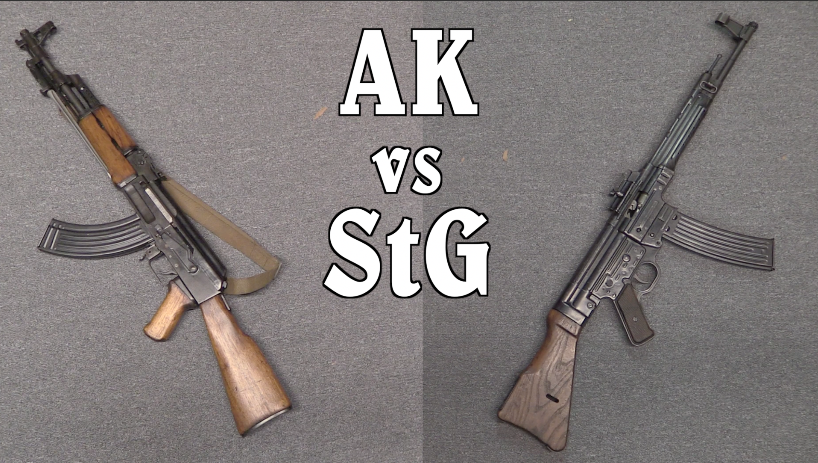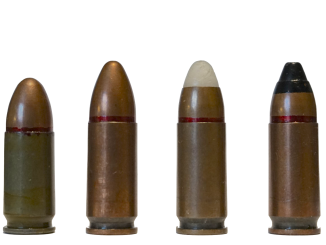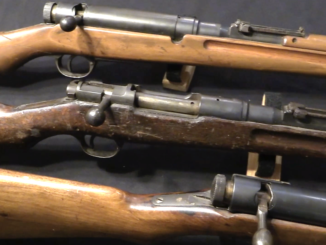Today we are looking at an overview of Soviet military service sidearms. This begins with the Model 1895 Nagant revolver, inherited from the Czarist Russian Army. The Nagant was adopted as the standard Red Army handgun, specifically in double action. Soviet refitting led to single-action Nagant revolvers being extremely rare today. In the late 1920s, a development program for a new semiautomatic pistol was run, which resulted in adoption of the TT30 Tokarev. Refinement of the Tokarev led to the TT33, adopted in 1933 and entering significant production in late 1935.
The Tokarev was considered a flawed pistol, and a new program in the late 1930s looked to replace it. A new design was chosen, but the German invasion in 1941 ended that project, and the Tokarev and Nagant would serve together through the end of World War Two. In the aftermath of the war, the Soviet Union adopted a wholly new suite of small arms. The new pistol was to be something lighter and handier, and with better safety features than the Tokarev. The PM Makarov was adopted to this end, and entered production in the early 1950s. It was used through the collapse of the Soviet Union, with a PMM (modernized) version unveiled in 1990, with a larger magazine. Eventually, the Russian Federation adopted the MP-443 Grach in 2003, a locked-breech 9x19mm pistol to replace the Makarovs.




The Tokarev pistol was not considered flawed. The competition to replace it was caused by the requirements of the tank forces. They asked for weapons to shoot from the tank’s embrasures. For this, a clean barrel was needed. Based on the experience of the war, this was considered unnecessary.
“The Tokarev pistol was not considered flawed.(…)”
Certainly it was not deemed FUBAR as in 1942 Izhevsk plant produced 1000 example of TT with 15-round magazine, see 1st photo from top https://dzen.ru/a/X7dx7mKUWx9-87Kd?experiment=931376 which has thicker grip and different magazine release.
The Chinese are now making high capacity 7.62×25 pistols. They are available in Canada, but not the US.
https://ammoterra.com/product/norinco-pistol-model-qx4
https://ammoterra.com/product/norinco-pistol-model-p762
So what was the failed replacement for the Tokarev? Any examples still in existence?
I reckon (ya dumayu) this one:
Пистолет системы Воеводина (1939)
It is in Russia Wikipedia.
To me it looks like a Luger and a Hi-Power had a love child.
https://ru.wikipedia.org/wiki/%D0%9F%D0%B8%D1%81%D1%82%D0%BE%D0%BB%D0%B5%D1%82_%D1%81%D0%B8%D1%81%D1%82%D0%B5%D0%BC%D1%8B_%D0%92%D0%BE%D0%B5%D0%B2%D0%BE%D0%B4%D0%B8%D0%BD%D0%B0_(1939)
“(…)Luger(…)”
This was due to one of requirements, which stipulated exposed barrel so it could be used with firing ports of armoured vehicles made for Nagant revolvers. See other contenders
https://www.earmi.it/armi/atlas/262.htm
keep in mind Margolin .22 rimfire (1st from top) was NOT one of them, but is useful for size comprehension (all drawing are in same scale)
See Handguns of the World by Edward C. Ezell, Stackpole, 1981;
https://archive.org/details/Handguns_of_the_World_Stackpole_Books
Chapter 12, “Soviet Handguns 1917 to 1940” shows and explains all of the proposals.
clear ether
eon
“…the very first versions of the makarov actually have a mechanism in them where when you insert the magazine with the slide locked open, it automatically closes the slide” – Where can I get more information about this mechanism? (I am interested in the slide auto release mechanisms.)
This pertains to progenitor of ПМ, namely ТКБ-412
http://war-russia.info/index.php/nomenklatura-vooruzhenij/307-sukhoputnye-vojska/strelkovoe-oruzhie/strelkovoe-oruzhie-2/pistolety-revolvery/2595-7-65-mm-opytnyj-pistolet-makarova-tkb-412-obr-1947g
I was unable to locate drawing of said feature
Thank you. I hope I will find details about the mechanism.
China has high capacity 7.62×25 pistols. They are not available in the US, but they are imported to Canada
https://ammoterra.com/product/norinco-pistol-model-p762
https://ammoterra.com/product/norinco-pistol-model-qx4
Vietnamese Army’s current automatic pistol named K14-VN is 7,62×25 and high-capacity
https://modernfirearms.net/en/handguns/handguns-en/vietnam-semi-automatic-pistols/k14-vn-eng/
On my Christmas wish list for next year.
>adopted the MP-443 Grach in 2003, a locked-breech 9x19mm pistol to replace the Makarovs.
You’re wrong. “Grach” was the name of development program, not the pistol itself.
The Russians were not the only ones who wanted to have a gas-sealed revolver.
The gas-sealed nagant was, for example, adopted by Belgium and Greece as well. A lot of people in Austria where thinking that gas-sealed revolvers are the next big thing in handgun design back in the 1890s. This lead to the development of the Steyr and later the Steyr-Piper gas sealed revolvers- but ultimately the conventional Rast & Gasser revolver was cheaper, the advantages of the Steyr-Piper revolver did not justify its much higher price and the people started to think that an other technology, the semiautomatic pistol, will be the next big thing anyhow.
There are some examples of the Steyr and Steyr Piper gas sealed revolvers in the HGM in Vienna.